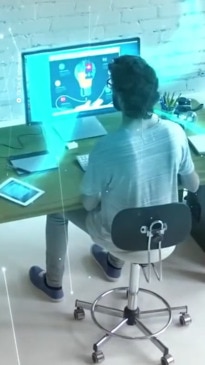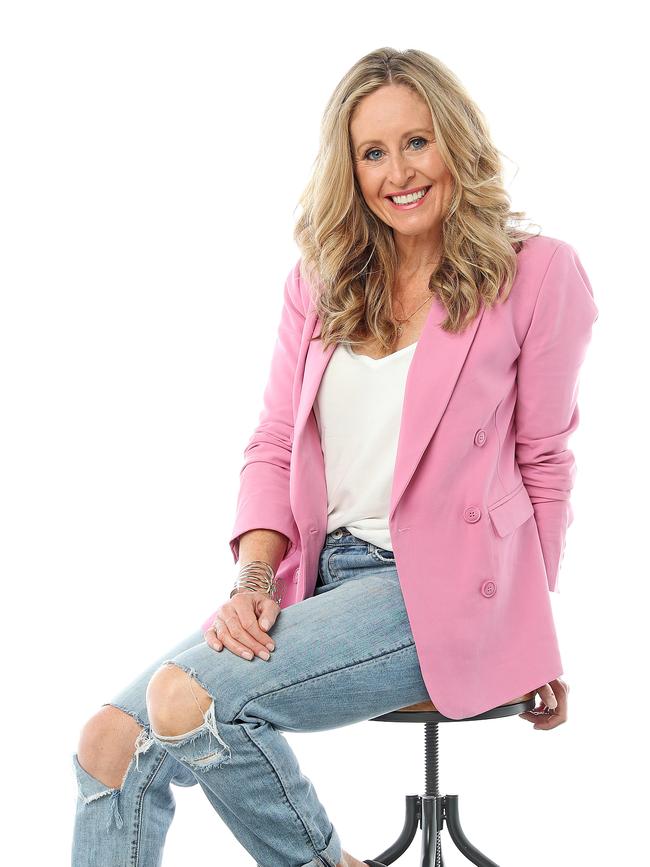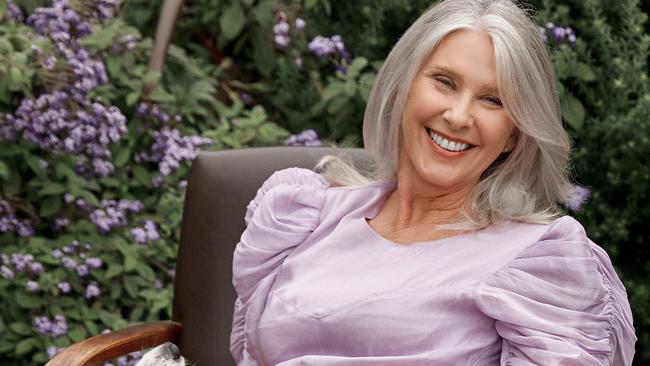Angela Mollard: There’s nothing artificial in real stories with heart
A robot is coming for our jobs and while I accept that artificial intelligence might be cheaper and faster than me, but an algorithm will never capture the real heart of stories that bind us all.

Opinion
Don't miss out on the headlines from Opinion. Followed categories will be added to My News.
Necrotising fasciitis. To anyone else this mouthful of a flesh-eating disease is a rare but horrendous infection that rots your body, sometimes moving so fast you can’t stop it and death is the only outcome.
To me, it’s a man on his doorstep with a newborn baby in his arms trying to form words in a world which has just fallen apart.
It was 30 years ago but I remember holding his baby girl as he read out passages from the diary his wife had written to their unborn child in the months leading up to her birth. Within 24 hours of delivering her daughter she was gone, snatched by the terrifying bug that had crept its way into the hospital.
I didn’t know when I became a journalist that these people would stay with me. That in telling their stories they were never simply going to be words on a page but fully coloured-in humans who ached or suffered or laughed uncontrollably because life in all its ugliness or joy had happened to them. You don’t forget them, they forever occupy crevasses of your mind, yet because of them you become better at shaping their stories.
But now a robot is coming for my job and while I accept that artificial intelligence might be cheaper and faster than me, I don’t trust an algorithm to capture the intricately soft dance that is storytelling. Will a bot notice how the mother talking about her son’s death from meningitis is sipping tea from a cup he painted for her? Will it observe that the 27-year-old woman with early-onset Alzheimer’s is looking at her newborn baby with puzzlement because she does not realise it is hers? Will it pick up the scent of tamarind as a young girl in Kenya falteringly tells of how she was raped by truck drivers who overnighted in her village on their journey from Nairobi to Mombasa?

I don’t want to sound like the dark room assistant at Kodak here because technology is fantastic and in the energetic march of innovation we all stand to flourish. The world turns constantly and we can jump enthusiastically on board or atrophy in its wake. Yet as artificial intelligence progresses from automation and augmentation to generation, surely we need to question not just what we’ll gain but what we’ll lose. As everything from Thalidomide to TikTok has shown, so often we embrace first and interrogate later.
Plenty of industries have been positively superseded by machines but the storytelling industry is so much more than formulaic processing. Rooted in fact, amplified by feeling and tested in the laboratory of public opinion, it doesn’t just govern how we think but how we make sense of humanity. When its bullshit, so are we. Even if it’s amusing at the time. Like when Microsoft’s new Bing ChatBot claimed it was Billy Eilish not Rihanna who sang at the Superbowl. Or the well-regarded The Irish Times falling victim to a hoax when it published an opinion column on its website last week arguing that wearing fake tan is racist. The piece, claiming that fake tan represented “cultural appropriation and fetishisation of the high melanin content found in more pigmented people”, was soon the second most popular article on the site but it had been submitted by a prankster who reportedly created it using AI. It was removed and the editors apologised for being duped.

Curiosity has prompted many journalists to throw a subject into the AI generator ChatGPT which hit the market six months ago. I entered my own name and asked for a short biography. It told me I was born and raised in Sydney (er, no), a columnist on the Sydney Morning Herald (I’m not), a host on ABC Life Matters (if only!) and that I was a regular guest on the ABC’s The Drum (again, have never appeared). It did say I was “highly-experienced and well-respected” which I’ll take but it also said I had a degree in French which is très … what’s the opposite of “bien”?
As news organisations consider how to protect their copyright and whether they should use bots, it’s incumbent on consumers to be discerning. As well as propagating fake news, AI in its current form is just a mimic. It uses content already in existence – even channelling the voice or tone of a known writer – to generate stories. It’s why gender and racial bias is embedded in the algorithms as Tracey Spicer’s new book, Man-Made, explores.
AI might see patterns in data sets but it doesn’t come up with its own ideas. It can’t break news, it can’t interview and, crucially, it can’t feel. It is, after all, artificial. When asked if it will replace journalists in publishing breaking news, even ChatGPT itself responded that while it had skills, journalists were “still essential for ensuring the accuracy, objectivity and fairness of news reporting”.
We also have instincts. Join dots. Spot parallels. Our investigations put people behind bars and lead to royal commissions. But more than anything we capture what it means to be human. All those years ago the man with the baby in his arms had a story: it was my job to make sure there was truth and heart in its telling.




